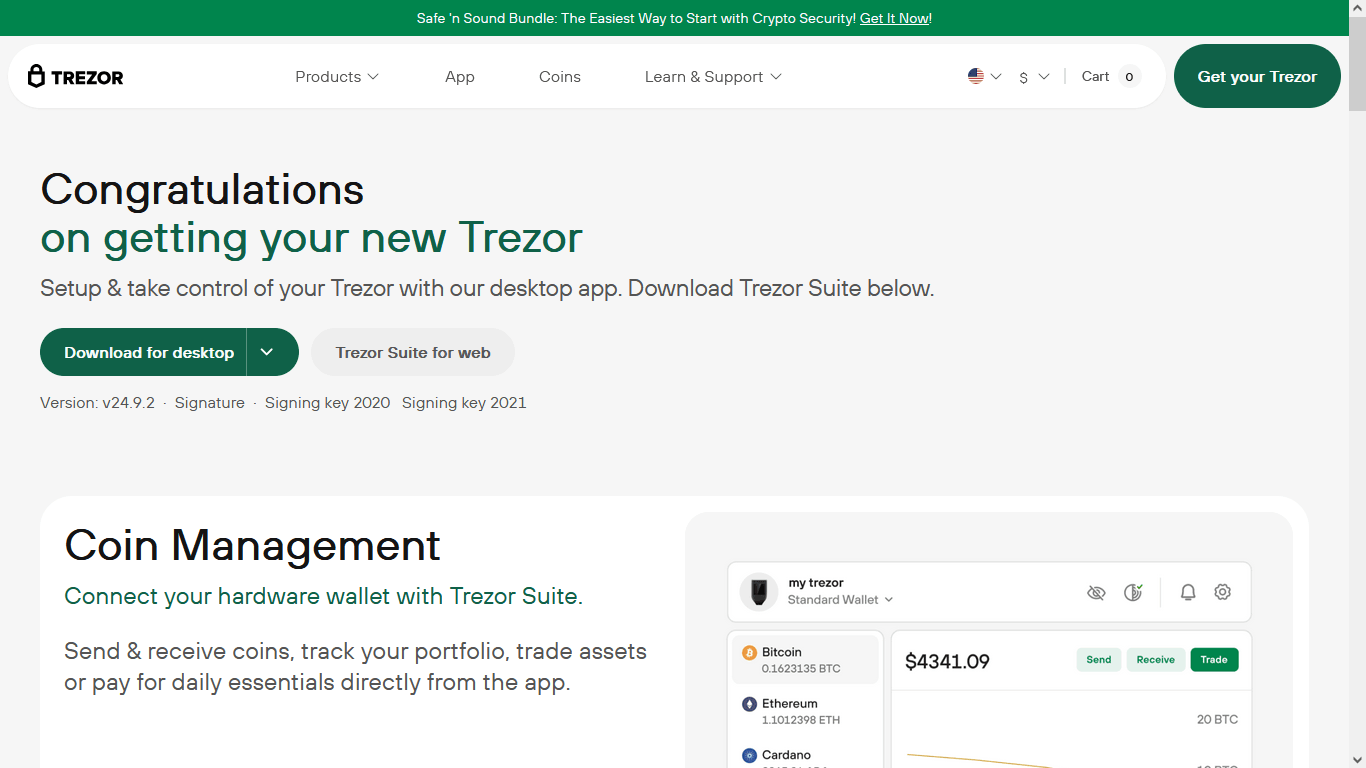🧠 Why Trezor Bridge Is the Backbone of Your Crypto Security System 🔐🌉
If you're serious about crypto, you’ve probably heard of the Trezor hardware wallet—one of the most secure ways to store digital assets. But what many people overlook is the key software glue that connects your wallet to your browser: Trezor Bridge 🧩.
In this post, we’ll dive into why Trezor Bridge isn’t just a “nice-to-have” — it’s an essential part of your security setup.
🔍 What Exactly Is Trezor Bridge?
Trezor Bridge is a software daemon—that’s tech speak for a background app—that enables your hardware wallet to communicate with your browser or desktop wallet interface (like Trezor Suite) 💻🔗.
Think of it as the invisible bridge between your Trezor device and the internet. Without it, there’s no way for your browser or app to “talk” to your wallet. It's like trying to Facetime someone without a camera 🎥❌.
🚨 Why It Matters for Security
- No Private Key Exposure 🛡️ With Trezor Bridge in place, your private keys stay offline — where they belong. All signing of transactions happens on the device, not on your computer.
- Secure Data Transmission 🔐 Bridge ensures that sensitive data (like your public keys and signed transactions) are transmitted securely between your Trezor and the interface.
- Prevents Browser Attacks ⚔️ By cutting out browser extensions and using direct USB-to-desktop communication, Bridge minimizes the attack surface.
🛠️ Installation Is Easy
Using Trezor for the first time? Setting up Bridge is a breeze:
- Go to the official Trezor Bridge page.
- Download the version for your OS (Windows, Mac, or Linux).
- Run the installer.
- Restart your browser.
- Plug in your Trezor, open Trezor Suite, and you’re good to go! ✅
You’ll only have to do this once unless you update or change devices.
⚙️ What Happens Without It?
Without Trezor Bridge installed:
- Your browser can’t detect your wallet ❌
- Trezor Suite won’t function properly 🧱
- You’ll hit a frustrating wall when trying to access your crypto 🚧
In short: no Bridge = no wallet access.
🔄 Updates & Maintenance
Trezor Bridge is self-updating and requires very little attention once installed. However:
- Make sure to allow automatic updates.
- Occasionally check the official site for changelogs.
- Restart your browser or computer after updates for the best performance 🔄🧼
🔚 Final Thoughts
Trezor Bridge is one of those things that works so well, you forget it’s even there. But don’t underestimate it — this small background tool is doing big work 🧠💪.
From protecting your keys to ensuring smooth access to your digital assets, Trezor Bridge is the unsung hero of hardware wallet security.
So if you're setting up a Trezor, don’t skip the Bridge. Install it, trust it, and let it keep your crypto safe behind the scenes 🌉🛡️💰
Made in Typedream
